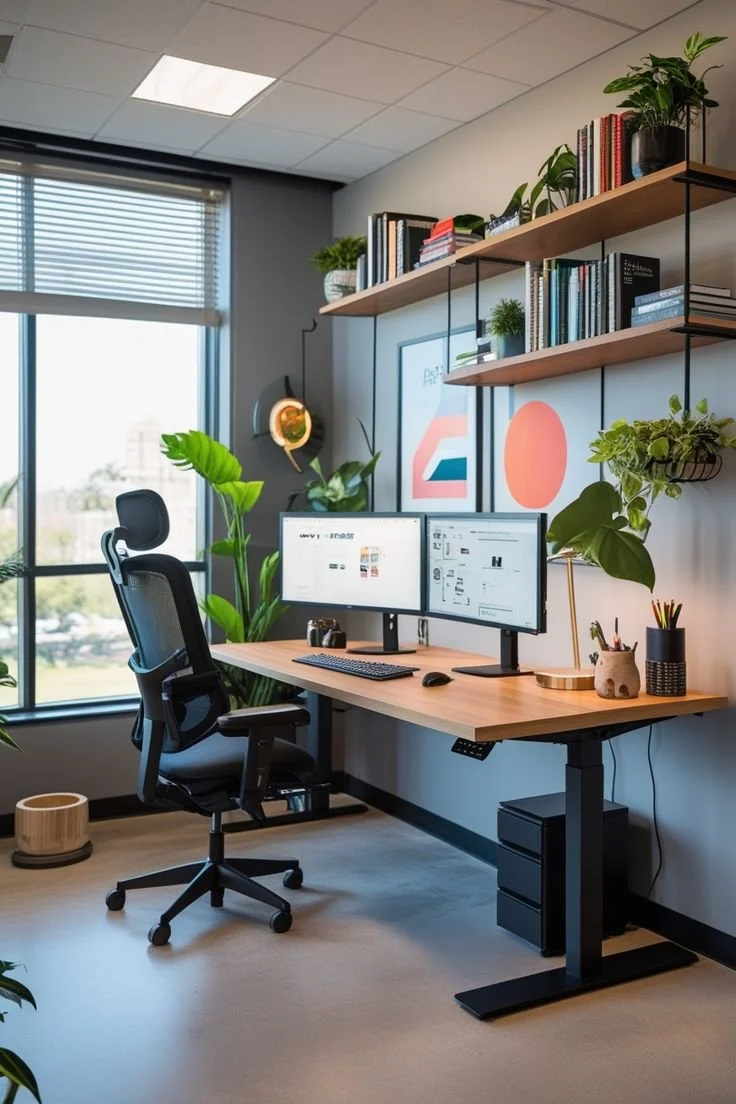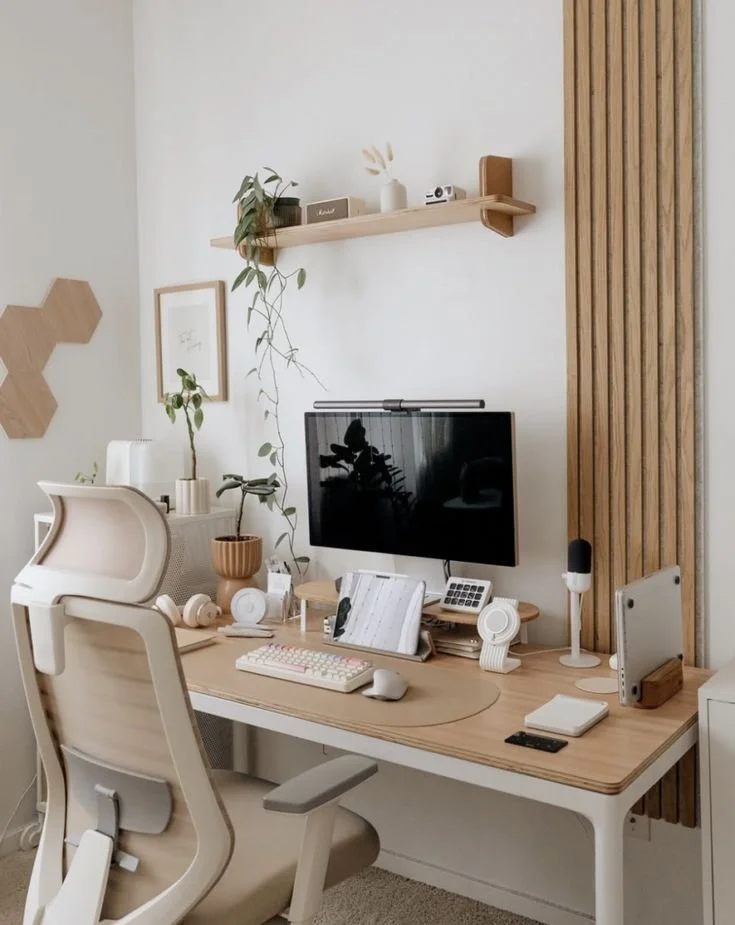How to Create a Productivity‑Focused Workspace at Home
A well-designed home workspace shapes how well we work. Moreover, when your environment supports focus and comfort, productivity naturally improves. Meanwhile, simple tweaks—like light, plants, and layout—can transform your home office into a performance powerhouse.
1. Choose a Dedicated, Defined Zone
Firstly, pick a specific area for work only.
For example, use a spare corner or room with a door you can close.
Also, research confirms that having a consistent workspace reinforces focus and routine .
Consequently, you signal to your brain it's time to work—reducing blur between home life and tasks.
2. Maximize Natural Light
Secondly, position your desk near a window.
Also, bright daylight enhances alertness, lowers eye strain, and lifts mood .
Therefore, open blinds and reflect light with pale walls or mirrors to amplify brightness.
3. Prioritize Ergonomics
Thirdly, invest in a good chair and an adjustable desk.
Also, position your monitor at eye level and maintain an upright posture .
For example, adjust your setup so your feet rest flat, and your arms align neutrally on the desk.
Thus, you avoid discomfort and stay productive longer.
4. Declutter and Organize
Meanwhile, keep your surface minimal: essentials only.
In fact, clutter floods the brain with distractions and reduces focus .
Therefore, use drawers or boxes to store supplies.
Furthermore, end each day with a quick tidy session for a fresh start tomorrow .
5. Add Life with Plants
Additionally, indoor greenery boosts productivity up to 15%, reduces stress, and muffles noise .
Also, plants help clean the air and increase humidity .
Therefore, choose easy-care varieties like snake plants or pothos—low effort, high reward.
6. Variety & Movement Options
Furthermore, design your space to alternate postures.
For instance, use a sit-stand desk or include a separate standing area .
Also, clear space nearby to stretch or move during breaks.
Thus, you avoid stiffness and maintain energy flow throughout the day.
7. Clear Tech Boundaries
Also, turn off non-work notifications—mute messaging apps or put devices away in drawers .
Moreover, give gadgets a home on shelves or in caddies to avoid needless screen time.
Consequently, your brain stays focused rather than fragmented.
8. Use Thoughtful Lighting
Meanwhile, add layered lighting: overhead, task, and ambient.
Additionally, consider smart bulbs that mimic natural daylight cycles to support alertness and sleep quality .
Therefore, you stay energized during work hours and wind down comfortably afterward.
9. Personalize with Purpose
Moreover, decorate with things that inspire—but don’t clutter.
For example, a framed photo, a motivational quote, or a small art piece can energize you .
As a result, your space feels unique and motivating—not sterile.
10. Zone for Efficiency
Lastly, organize your room into clear zones:
Focus zone: Desk and chair for concentrated work
Reference zone: Shelves or pinboards for outlines or reminders
Refresh zone: Standing area or comfy corner for breaks
In this way, your room supports both productivity and renewal.
Quick Reference Table
Feature Why It Matters Tip
Defined zone Builds routine & focus Use spare room or corner
Natural light Improves mood and alertness Desk near window
Ergonomic setup Prevents strain Chair & desk at proper height
Decluttered space Reduces mental fatigue Daily quick tidy-up
Indoor plants Boosts mood, creativity, and air Snake plant, pothos, etc.
Movement options Maintains energy Sit-stand desk or mat area
Clear tech rules Limits distractions Mute notifications
Quality lighting Supports circadian rhythm Smart bulbs, layered lighting
Personal touches Inspires and reflects identity Minimal décor
Zoned layout Enhances flow & functionality Define focus, reference, relax zones
Final Thoughts
Building a productivity-focused home workspace is simpler than it sounds.
By choosing a defined zone, optimizing light, prioritizing ergonomics, and adding nature, you support both comfort and focus.
Furthermore, movement, decluttered surfaces, mindful lighting, and personalization enhance well-being and creativity.
Ultimately, your environment either supports your work—or it doesn’t.
So, shape your space intentionally—and watch your productivity flourish.

